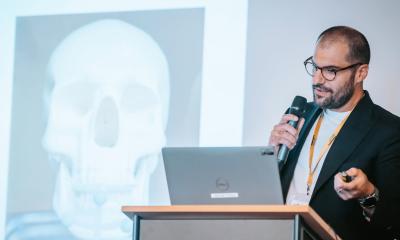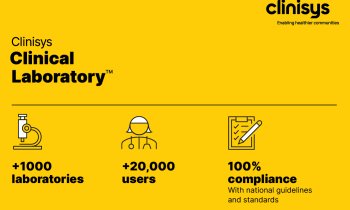New cancer research targets
‘We aim to develop an understanding of which novel research activities could bring benefits for patients,’ explained Professor Christof von Kalle, Director of the Department of Translational Oncology, NCT (German National Centre for Tumour Diseases) and the German Cancer Research Centre (DKFZ), speaking on translational activities during the New Cancer Targets gathering in Heidelberg this September.


‘We structured our conference according to radiotherapy, targeted drugs mostly derived from genetics, the identification of novel targets which may not yet be targetable, as well as immunotherapy and prevention.’
This year the NCT will report about 11,000 new cancer cases and perform more than 35,000 therapies. DKFZ aims to organise patient-related research and treatment under one roof; in addition to implementing best established clinical processes involving interdisciplinary tumour conferences, the group does its best to make available the most recent study protocols and trials for patients. Roughly, ten percent of patients are enrolled in clinical trials and the aim is for this figure to rise. The conference focused on putting activities in Heidelberg in the context of international research.
Translating into clinical routine at a faster pace
‘We are witnessing an acceleration of discoveries translating into clinical diagnostic or therapeutic procedures’, the professor noted. ‘This holds particularly true for discoveries transferring from one tumour entity to another.’ An example of this transfer is how BRAF gene mutations originally studied in skin cancer are suddenly found in rare forms of leukaemia, with trials following quickly to verify whether skin cancer drugs have an effect on those leukaemia conditions.
Navigating the genetic landscape
‘In this meeting we are trying to ‘shake the tree’ to understand what the key developments will be in the field.’ A lot of the presented work was about navigating the landscape of genetic discoveries and identifying what could be put to clinical use; this included, for example, new interpretations of epigenetic modifications in cancers.
Using old tricks in new applications was another approach offered: tissue hypoxia and the role of the tumour stroma for the radiation process are returning to the agenda. A research area showing continued growth is drugging the cancer genome, with interventional studies that aim to inhibit tumour-specific mutations. Intelligent combination therapies are also experiencing widespread interest. Innovative anti-cancer targets are focusing on more recent developments in brain tumours, in particular glioblastomas, with a focus on molecular issues.
Prof. von Kalle pointed out that there are many clinical immunotherapy trials: ‘Various groups are working on new agents, antibodies, and vaccines as well as T-cell preparations to harness tumour immunity.’
Prevention is a field that is still in its introductory phase in Germany. ‘However, in a sense it is probably the most important one. Known risk factors, such as smoking, excessive alcohol use, and obesity can be addressed. We need to identify the risk groups and engage in preventive measures.’ Cohort studies are conducted to observe the population and demonstrate which individuals in those groups develop cancer. ‘Studies already indicate that risk factors for cardiovascular diseases also play a role in the development of cancer or in the rate of tumour growth – as is the case with elevated insulin levels.
‘After some time of stagnation, today a lot is happening in oncology, with the rate of discoveries going up drastically over the last three to five years. We expect this to continue for probably another decade. Even if the out-patient scenario may become more important, the rate of discoveries and early diagnosis will still lead to ever larger numbers of patients requiring conventional procedures.’
Utilising cancer fingerprints
Sarcomas primarily afflict children, adolescents and young adults. These extremely aggressive cancers are not as common as carcinomas, which may be the reason why they have not received as much attention, explained Nobel Prize winner Dr Mario Capecchi, Distinguished Professor of Human Genetics and Biology and co-chairman of the Department of Human Genetics at the University of Utah in Salt Lake City. ‘What our team is performing on mice appears to be very similar to what happens in a human body. Many genes are, for example, turned on and off when a cancer emerges, and each cancer has a different fingerprint. We use that fingerprint in a mouse to find whether a certain cancer faithfully recapitulates the same cancer in humans.’ Each cancer is different and goes through critical events; each type of cancer therefore requires a different approach to therapy, he concluded. ‘Progression of the cancer in the mouse can be studied in much greater detail than can be done in humans – where we are typically confronted with the final stages of the cancer – we can find out in mice how the cancers develop and progress, and can use the same mouse model as a platform to develop new therapies.’
Prof. Capecchi’s team is currently studying and modelling four sarcomas. ‘They differ very much at the molecular level,’ he said. ‘Understanding those characteristics will help us design the highly different therapies required.’ The metastasis stage is the most critical phase.
Sarcomas are simpler than carcinomas, but both types of cancer have rules in common as to what cancer cells do. ‘Therefore, what we are learning from modelling sarcomas will also be applicable, in later stages, to carcinomas,’ Prof. Capecchi emphasised.
11.02.2013











